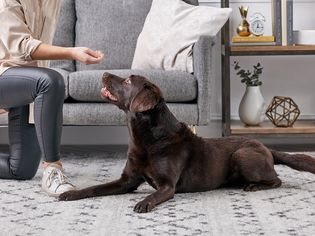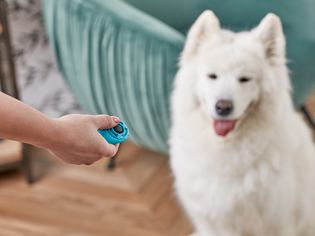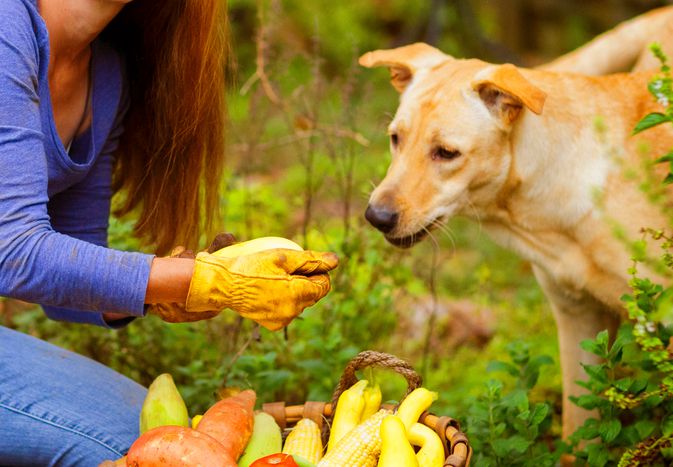How to Care for a Blind Dog
Blindness occurs in many species including dogs. Some dogs are born blind while others develop blindness. But regardless of how a dog may become blind, blind dogs require special care that is different than that of a sighted dog. Knowing how to care for a blind dog can help prevent many frustrations, misunderstandings, and even injuries from occurring so dog owners should educate themselves on the special needs of their blind pets.
Causes of Blindness in Dogs
While some dogs have congenital blindness due to a lack of eyes (anophthalmia), small eyes (microphthalmia), or other developmental issues prior to birth, other dogs may have problems that result in a loss of sight as they age or due to injuries.
- Cataracts: Inside part of the eye called the lens, cloudiness can occur to create a cataract. These white opacities are common in older dogs but can also develop due to diabetes. Some dogs may also be born with them or develop them as juveniles.
- Glaucoma: Glaucoma occurs when the normal pressure in the eye increases. If this pressure stays too high for an extended period of time it can cause damage to the optic nerve inside the eye and result in blindness.
- Sudden Acquired Retinal Degeneration Syndrome (SARDS): This rare disease can cause sudden blindness due to deterioration of the retina inside the eye. No one knows what causes SARDS.
- Progressive Retinal Atrophy (PRA): Dogs with PRA lose their sight as the rods and cones inside the retina in the eye die off. This is an inherited disease that has two forms with one form showing up in puppies and the other form not showing up until a dog is older.
- Retinal Detachment: This can occur as a result of a variety of things in dogs but if the retina detaches inside the eye, a dog will lose its vision.
- Corneal Ulcers: Ulcers are very common in dogs but if they are left untreated or do not heal properly they can cause blindness. Blindness can occur due to damage to the cornea or if the ulcer is so deep that it causes the eye to rupture.
- Other Trauma: Proptosis, punctures, and other horrific eye injuries aside from ulcers can cause blindness.
- Nervous System Diseases: If a dog has a problem with certain parts of its brain, meningitis, or other nervous system diseases blindness may occur.
Training a Blind Dog
Overall, blind dogs can lead very normal lives but training them to follow basic commands requires different techniques than those that are commonly used for sighted dogs. It will be easier for a dog that is born blind to learn things and adjust but for a dog who is used to being sighted it may take more time.
- Avoid hand signals: Instead of hand signals, use verbal cues, tasty treats, and clicker training to teach your blind dog tricks and commands. Get in the practice of alerting your dog when it is about to bump into something with a word like "watch" or when it is approaching a step with a word like "step." These cues will help keep your dog safe and more confident in its surroundings.
- Do not rearrange furniture: Moving furniture around makes it harder for a blind dog to learn its surroundings. A blind dog often memorizes the lay out of a house and can avoid bumping into furniture if it doesn't change.
- Use bells: Placing bells on the collars of other pets and on people either as a bracelet, on a belt loop, or on the shoelaces helps a blind dog learn where you and other animals in the house are.
- Feed in the same place: Avoid moving food and water dishes around so that a blind dog knows exactly where to go if it is hungry or thirsty. Putting these dishes in the same place every day will make it less stressful for a blind dog to navigate to them.
- Use textures: Different surface textures may make it easier for a blind dog to know where it is in a house. Carpeting or rugs in one room feel different than tile in another room and this may help a blind dog learn its environment more easily.
- Consider a sighted friend for your blind dog: Some blind dogs thrive when they have a sighted dog to be their guide dog. If your blind dog has a friend they already know and trust this may be of benefit but some friendly dogs may also be receptive to adding a new dog to the house for this purpose.
RECOMMENDED NEWS

How to Use Positive Reinforcement to Train Your Dog
Using positive reinforcement to train your dog means you reward the behaviors you like and ignore t

How to Train a Labrador Retriever
Labrador retrievers regularly top the list of most popular dog breeds. These smart, social dogs are

How to Clicker Train Your Dog
Clicker training is a common form of positive reinforcement for dogs. This simple and effectiv

Can Dogs Eat Yogurt?
Jam-packed with nutrients like calcium and protein, as well as probiotics that help support digesti

Can Dogs Eat Carrots?
With so many commercial dog treats on the market, it’s no surprise that many pet owners are seeki

Can Dogs Eat Squash? Here's What a A Vet Thinks
A lot of dogs really enjoy chomping on fruits and vegetables. So, the next time you’re preparing
Comments on "How to Care for a Blind Dog" :